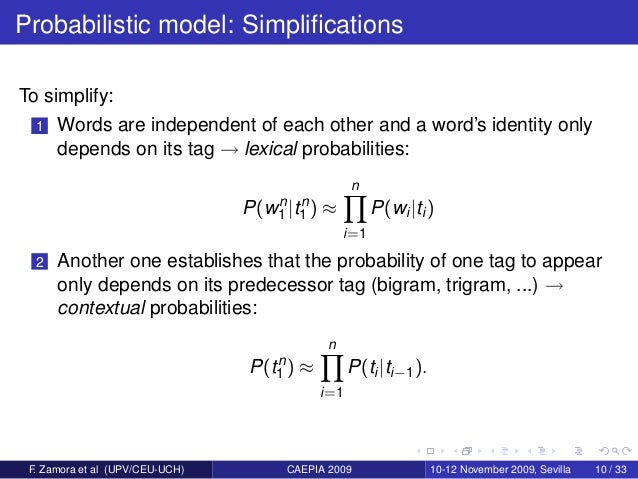


The OpenNLP POS Tagger uses a probability model to guess the correct pos tag out of the tag set. It is based on transformation based learning (TBL) approach pioneered by Eric Brill. A token can have multiple pos tags depending on the token and the context. Perform part-of-speech tagging of english sentences using wink-pos-tagger.

The Part of Speech Tagger marks tokens with their corresponding word type based on the token itself and the context of the token. The description from the Apache OpenNLP Developer Documentation on Tagging: I use maven, so these files go into src/main/resources and are loaded with getResourceAsStream, as you’ll see below. natural-language-processing word-segmentation part-of-speech-tagging. in the paper Joint Khmer Word Segmentation and Part-of-Speech Tagging Using Deep Learning. If you care, you can read about OpenNLP Maxent here. A Keras implementation of a deep learning network to simultaneously perform Word Segmentation and Part-of-Speech (POS) Tagging introduced by Bouy et al. Such approaches can achieve the best performance however, annotating data. I’m using the Maxent model (maximum entropy) instead of the Perceptron model because, frankly, I’m not familiar with what the Perceptron model is. Overflows, 21, 22 propose a rule-based POS tagger for source code annotation. Only one additional model file is needed for part-of-speech tagging.Īs with all of the model files, it can be found at and are identified by language and component. Extracting Names with the OpenNLP 1.5.0 Named Entity Finder.Making Coreference Resolution your bitch with OpenNLP 1.5.0.Part-of-Speech (POS) Tags: Penn English Treebank.Part-of-Speech (POS) Tagging with OpenNLP 1.5.0 (surprise, you’re reading it).Getting started with OpenNLP 1.5.0 - Sentence Detection and Tokenizing.Here are the links to the rest of my posts: If you haven’t, go back to the beginning. This all assumes that you’ve already done sentence detection and tokenization. It’s actually pretty straightforward once you’re set up to run OpenNLP. Continuing from where I left off, I’m going to quickly touch on part-of-speech tagging before moving on.


 0 kommentar(er)
0 kommentar(er)
